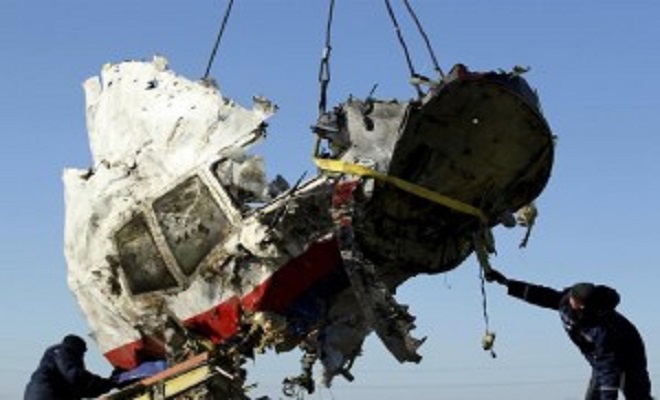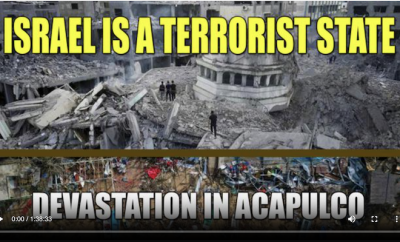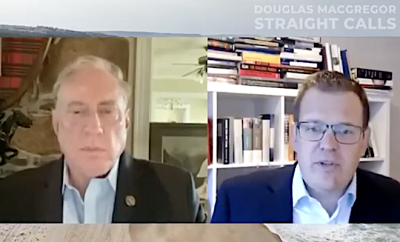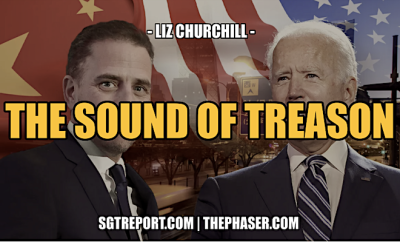 NEO.org
NEO.org
Featured
MH17: How the Media Failed the Victims and the Families
by , NEO.org:
In examining the evidence relating to the shooting down of Flight MH17 over the eastern Ukraine in July 2014 it is appropriate to approach the task as one would a prosecution of those responsible.
First, one has to establish the facts as they can be established to the requisite standard of proof. Secondly, discard the highly improbable, impossible, or just plain speculation.
One may then reach a logical conclusion based on the established facts, or at least a working hypothesis that further facts will either confirm or reject. In doing so it is necessary to maintain a healthy skepticism about claims made by obviously interested parties. Apart from an agenda that may have little to do with establishing the truth, the experience thus far suggests that such parties rely upon assertions rather than evidence.
In reporting those assertions and disregarding important evidential developments it is clear that the western mainstream media have failed in several important respects. Ever since the plane was destroyed on 17 July 2014 with the loss of all on board, the media have subjected their readers to a barrage of allegations, half-truths, innuendo and speculation, almost none of which has a proper evidential basis.
Instead of asking what should be the obvious questions and seeking answers, the media have in effect reached a conclusion at the outset and then sought to cherry pick evidence as it emerged, almost universally ignoring that which did not fit their original allegations which have been treated as a conclusion not to be questioned.
This is of course the antithesis of the procedure for a proper inquiry. Given the geopolitical context of the MH17 disaster, a reasonable starting point would be to note that the conclusion reached by the media at the outset and maintained thereafter reflects an opinion and an agenda toward Russia and its President more than it does a genuine wish to determine the evidence and hold those responsible accountable.
What is the evidence that can be relied upon as establishing a factual basis? There is at this stage (April 2015) quite a significant amount, although one would have trouble determining that from the mainstream media coverage.
First we have the so-called black boxes, being the voice and flight data recorders. These boxes were recovered from the scene by soldiers of the militias engaged in a civil war between residents of two Russian speaking eastern provinces in Ukraine’s south east who had voted for independence from the Kiev government installed in an American financed and organized coup in February 2014, and soldiers of the Kiev military, aided by militia groups controlled by pro-Kiev oligarchs. This latter group have a heavily neo-Nazi component, a relevant fact concealed by the mainstream media.
Those black boxes were in turn handed over to the British for analysis. In the context of this inquiry it would be unwise to assume that all the relevant data have been released. I will confine myself to noting only those data that have been corroborated from other sources.
On 9 September 2014 the preliminary report of the accident investigation headed by the Dutch released some of the information from those boxes. The Dutch are conducting the inquiry, apparently on the basis that the flight originated from Amsterdam and the largest group of victims were Dutch citizens. Malaysia, the owners of the plane, was excluded from leading the inquiry for reasons set out below. The Ukraine, where the plane came down, should have been the logical place for the investigation but was also excluded, but in a different manner to the Malaysians. I will return to this issue below.
The only information released in their report confirmed that the pilots had no prior warning of the catastrophe that was about to befall them. There is only very limited data as to the contact between the aircraft and Kiev air traffic control, and Rostov air traffic control (the next way point on the flight path). There are unsubstantiated reports that officers of the Ukrainian security services seized the Kiev air traffic control data immediately after the plane crashed. While that has not been confirmed it is established that no details of the conversations have been released.
We do not therefore know the reasons for the plane’s flight path was diverted while it was in Polish air space in a manner that took it directly over a war zone. Not only have the relevant recordings not been released, the personnel involved have not been interviewed by the investigators. This is a fact that might lead to a negative inference being drawn, but it is not of itself determinative of very much.
The flight data recorder evidence does confirm at least one incontrovertible fact: that the devastation of the plane was caused by externally sourced objects. Of itself, that does not add much to the narrative other than excluding sources specific to the plane such as a bomb or structural failure.
The more important questions are what were those objects; from where did they originate; and who was responsible for them being fired? A subsidiary question is whether the objects were fired with the intention of downing the aircraft, or was it a case of accident or mistake?
The second sources of verifiable facts are satellite and radar imagery. This area of information points to a number of important circumstances that not only shed light on how the disaster may have occurred, but also confirm the proposition that the western media have failed in some very basic responsibilities.
Immediately after the crash on 17 July 2014 the western media immediately blamed Russia in general and President Putin in particular. This was before anything remotely approaching the gathering of evidence had occurred. In the absence of any admissions such a stance was at the very least premature.
The suspicion that this instant apportioning of blame on Russia was not coincidental was reinforced by the release of two pieces of “evidence” by the Ukrainian authorities. This “evidence” consisted of recorded conversations between members of the pro-independence militias; and a picture of a BUK missile battery being transported across the border into Russia.
The intercepted conversations were of two militia officers discussing the successful shooting down of a plane. It was rapidly established however, that the conversations were a pastiche of different conversations, and not only referred to the shooting down of a Ukrainian military aircraft, had actually been recorded in days prior to 17 July 2014. This demolition of what had been presented as strong evidence of Russian supported militias was not reported in the mainstream media.
Similarly, the photograph purporting to show a BUK missile battery being transported across the border into Russia was also quickly proven to be actually taken in a Ukrainian town and was a Ukrainian military BUK battery. Again, this fact was not reported.
Again, this presentation of fake evidence is not determinative of the issues, but it does raise legitimate suspicions about the authenticity of the investigation, and the motives of, in this case, the Ukrainian government.
Prior to the G20 meeting in Brisbane in November 2014 the Australian Prime Minister Tony Abbott infamously promised to “shirt-front” Mr Putin over Russian “responsibility” for MH17’s shooting down. The “shirt fronting” never occurred, but the threat helped to feed a generally ignorant media frenzy that never allowed the facts to impede the flow of misinformation.
In the face of this orchestrated media barrage the Russians organized a media conference on 23 July 2014. At this conference, to which all major media organizations were invited, the Russians presented their radar and satellite data for the period leading up to the shooting down of MH17.
A number of important facts emerged from this presentation, although again one would be hard put to find it in the western mainstream media. The first was that the Russian radar identified a military aircraft, most likely a SU25 of the Ukrainian air force, in close proximity to MH17. The main response to this information by the media was a claim that the SU25 was incapable of operating at the height MH17 was flying. This was clearly misinformation as the operating capacity of the SU25 is readily available from military reference sources. Again, the question is raised as to why false information should be disseminated, and why did the mainstream media not disclose that fact. An explanation for the military aircraft’s presence in a civilian flight path has not been forthcoming.
The second fact of significance to emerge from the Russian presentation was that at the time of the shoot down an American satellite was directly overhead. The Russians invited the Americans to release their satellite data, which may well be definitive as to many aspects as to the sequence of events. To date the Americans have refused to do so, rather bizarrely referring to matters on social media as the basis for their campaign of demonizing Mr Putin.
Sufficient is known about the capacity of spy satellites to confidently conclude that their data would be both relevant and instructive. The failure to produce this evidence publicly again invites a negative inference being drawn. The interim Dutch report was silent on the point of either the Russian or the American satellite and radar evidence.
Also at the time of the shoot down American warships were engaged in exercises in the Black Sea. They also have sophisticated electronic monitoring equipment that potentially has information about the sequence of events surrounding the shoot down. Again, nothing has been disclosed to the inquiry.
Looked at from a different angle, given the blame being apportioned to Russia and/or Russian supported separatists, if the Americans in fact had satellite proof of a ground to air missile being fired (the alleged culprit being a BUK ground to air missile) it is a reasonable assumption that the data would have been released.
There are a number of factors that militate against the cause of the crash being a BUK missile. It is for example, a sophisticated weapon. It is known to be in the possession of the Ukrainian military. Even if the separatists had seized one, there is no evidence that they had the training to be able to operate it.
Even if the separatists had the requisite personnel and expertise, there are further factors that militate against the culprit being a BUK missile. The first is that it is a very large and noisy weapon; when fired there is a powerful flash at the launch site; and that it leaves a distinct vapour trail lasting several minutes after it has been fired. There is no plausible evidence of such a weapon being either seen or heard.
The second factor is that the BUK is designed to explode 50 to 100 metres from the target causing an aerial shockwave, which results in high-speed fragment distribution. Those fragments are capable of breaking the fuselage of a Boeing 777, but the pattern of destruction of MH17 is not consistent with being damaged by a BUK missile. The damage pattern of multiple bullet holes is also inconsistent with a BUK missile.
Thirdly, had the plane been damaged by a BUK missile it is likely that the pilots would have been able to broadcast the fact they had been damaged. No such broadcasts were made according to the data released by the Dutch investigation. The evidence does show however, that the pilot’s seats were damaged by bullet penetration. The most plausible explanation for the failure of the pilots to radio the fact that they had been attacked is that the bullets fired into the cockpit area instantly killed them. Even if the bullets, which is unlikely, did not hit them the penetration of the cabin would have cause instant depressurization, which would also have killed the pilots.
The plane would have continued for a period in automatic flight mode. The missile would then have depressurized the whole cabin causing the plane to go into a tailspin. The g-forces thus created would have caused the breakup of the plane at high altitude. This accounts for the widespread nature of debris.
The fourth factor is that nobody has been able to suggest a plausible motive why the Russians or the Russian supported separatists would wish to bring down a civilian airliner from a country and carrying passengers entirely unrelated to the ongoing conflict. The opprobrium attached to such an act carries no benefit for the Russians or the separatists. On the other hand being able to blame the Russians has considerable benefits for the Kiev regime.
A fifth factor that has progressively emerged and upon which most western media is silent, is the claim that the fuselage, especially the cockpit area, was riddled with what appeared to be bullet holes consistent with 30mm cannon fire. Thirty-millimeter cannons are part of an SU25’s armaments.
The first suggestion to this effect came from a Canadian OSCE observer who inspected the wreckage in situ. Michael Bociurkiw, a Canadian of Ukrainian origin, gave an interview on Canadian television on 29 July 2014. He described his preliminary conclusion that the observed damage to the cockpit area of the plane was consistent with 30mm cannon fire. No word of that interview or Mr Bociurkiw’s conclusions has been published in the Australian mainstream media.
A German former pilot, Pater Haisenko, has put forward some further confirmation of that cause of damage to MH17. Considerable caution should be exercised about Mr Haisenko’s opinion, as he had to work solely from photographs of the wreckage. This is not to question Mr Haisenko’s sincerity, but that it is possible to provide a more definitive explanation than an examination, however expertly, of photographs. I will return to this below.
There have been at least two further developments on this issue. In the first of these the Russian military conducted an experiment, firing 30mm shells into an old aircraft. The pattern of damage observed was markedly similar to the damage on MH17. A documentary on these experiments is available on Russian websites, although no report of the results has appeared in western mainstream media.
Secondly, in March 2015 Dutch officials allowed foreign investigators to inspect the damaged MH17 which was slowly being reconstructed in a hangar in the Netherlands. Military experts who saw the damage confirmed the earlier reports that the damage in the cockpit area was consistent with cannon fire. The pattern of damage was typical with both entry and exit holes. Again, none of this has been reported on the mainstream media.
The Dutch preliminary report of September 2014 described the damage as being consistent with the aircraft being hit by a large number of high velocity objects. These were undefined and the phrase was not elaborated upon. This did not prevent the Australian Prime Minister declaring that the Dutch interim report “confirmed” that the plane had been shot down by a BUK missile. That the report said no such thing again escaped the attention of the media who reported the Prime Minister’s comments without question.
For the reasons noted above, “high velocity objects” is inconsistent with a BUK missile, but entirely consistent with both 30mm cannon fire and an air to air missile.
The issue of what hit the plane from outside is one that is capable of definitive resolution. Forensic examination of the damaged fuselage would immediately reveal what struck the aircraft. All objects have a distinct chemical signature, traces of which are ascertainable from the wreckage. That evidence may be the single most important element of a proper investigation. No results were disclosed in the Dutch interim report. The final report is expected later this year and that is an aspect that will be closely anticipated.
If the forensic examination does confirm what is widely suspected, that the destruction of MH17 was caused by a combination of cannon fire and an air to air missile, then that would radically affect the entire premises upon which the mainstream reporting has been predicated.
The technical ability to conduct such an examination is not in doubt. Nine months after the disaster it is probable that such an examination has been completed. The political will to release the forensic data is a different matter, for two reasons.
If the results of the forensic examination confirmed that it was a BUK missile, that would tentatively support the “Russia and/or Russian supported separatists did it” theme so assiduously promoted by the western media, although it would far short of proof that either party had actually done it. Who actually fired such a missile is not as amenable to forensic proof, although proof seems the least of the considerations of the mainstream media to date.
The second reason is far more likely. If the results showed that it was in fact an air to air missile then the responsibility for the tragedy then shifts squarely onto the Ukrainian government. No reasonable alternative hypothesis is possible.
The Dutch in that case would almost certainly not publish the results because an agreement between Ukraine, Belgium, the Netherlands and Australia was entered into on 8 August 2014. This agreement provides that the results of the Dutch investigation will not be published unless all four governments agree. This effectively gives a veto to the prime suspect, Ukraine, which must be unprecedented for a major criminal investigation.
Malaysia, which as the owner of the plane should have been a party to any agreement governing the investigation. They refused to sign the 8 August 2014 agreement. It has since been reported in the Malaysian press that Malaysia did join the investigation in December 2014. Curiously however, the Malaysians have not disclosed either the reasons for their initial refusal, nor the reasons for apparently changing their mind in December 2014.
The fact of the 8 August 2014 agreement has not been published in the Australian mainstream media. The terms of the agreement have thus far resisted Freedom of Information Act endeavours in Australia and the Netherlands for their release. Both governments cite national security issues, although how that is relevant is unclear.
The alternative media remains rife with speculation and claims of dubious veracity. Many undoubtedly have a lot of merit. It is significant however, that reporting of the ongoing investigation and publication of serious analyses is confined to the alternative media. It is a role that the mainstream should be performing but manifestly are not. The problem is particularly acute in Australia where there is a concentration of media ownership in so few hands.
On 22 July 2014 the UN Security Council unanimously adopted Resolution 2166 (2014), one of whose co-sponsors was Australia. The resolution reads in part:
“Stressing the need for a full, thorough and independent international investigation into the incident in accordance with civil aviation guidelines.”
On the available evidence thus far it is not possible to conclude that the investigation is “full”, “thorough” or “independent”. A number of factors militate against any confidence in the integrity of the investigation. These include but are not limited to:
The refusal of the Americans and the Ukrainians in particular to fully disclose relevant information;
The secrecy about releasing the results of the investigation and even the fact that such an agreement exists;
The veto power accorded the prime suspect; and
The apparent determination of many countries to use the tragedy to advance a geopolitical agenda that seeks to undermine Russian society and government.
The victims, and their families, deserve better.












